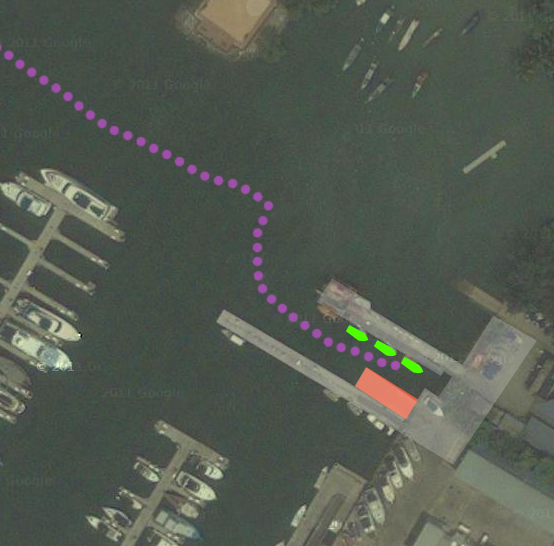Studying and memorising may not be sufficient for some people. If you feel unsure about your practical, consult your PPCDL center for "refresher courses".
Know what you are tested on
The practical handling test will assess your abilities on 5 matters:
- Overall Hull & Equipment Check
- Unberthing
- Man-overboard Drill
- Berthing
- Oral Test (You will be asked questions)
Know your environment
-
Watch the wind and current
This is to ensure that you calculate your direction accurately to avoid hitting the jetty. Collision with jetty constitutes an immediate failure.
You can determine the wind direction via the sea, as well as flags along the jetty.
Wind direction also plays an important role in your Man-overboard Drill
-
Watch out for RSYC boats
As RSYC boats are leaving, their boats may leave a wake/swell which may cause your boat to collide with the jetty if handled improperly.
-
Watch out for RSYC slipway
As you are reversing into the sea, be careful not to hit the slipway (marked in red).

-
Plan a route
Remember that your boat is facing land and that you have to reverse out. A potential route is marked in pink.
Remember your checks
-
11 Items + Boat License
This is to ensure that you calculate your direction accurately to avoid hitting the jetty. Collision with jetty constitutes an immediate failure.
You can determine the wind direction via the sea, as well as flags along the jetty.
Wind direction also plays an important role in your Man-overboard Drill
-
Start engine before casting off
In event of engine failure, casting off requires you to paddle back to shore. This also adds 5 demerit points.
